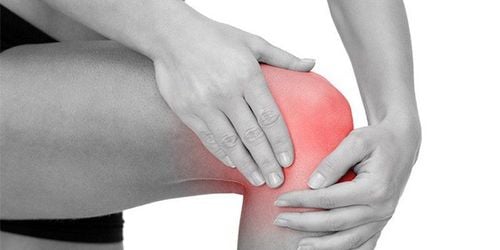This is an automatically translated article.
Patrick's test is a specialized test to support the diagnosis of musculoskeletal disorders. This method is used when the patient has limited hip mobility to distinguish if the patient complains of pain during the test that there is a hip injury. So how to do the Patrick test correctly?
1. What is the Patrick test?
Patrick's Manometry is a physiologic examination to identify dysfunction of the pelvic joints occurring in patients with lower back pain. Most importantly, it is important to evaluate the potential risk factors for lower back pain symptoms. Common causes include lumbar dysfunction, lumbar ligament instability, lumbar degenerative disc disease, and pelvic joint dysfunction.
The pelvis is a synovial joint made up of the junction of the sacrum and the pelvis. Joint stability is maintained by a series of ligaments including the anterior and posterior iliac ligaments. The joints function as shock absorbers for the pelvis and lumbar spine. In addition, trauma is also a common cause of pelvic joint dysfunction. Cases of patients have been recorded with direct trauma to the hip or trauma involving the pelvic musculoskeletal area.
2. How to do the Patrick test
To perform a standard patrick test, position the patient in supine position, with the affected knee at 90° and the foot resting on the contralateral knee. The examiner will then push down on the flexed knee to perform an external rotation of the hip. If pain in the buttock area is considered positive for sacroiliitis, and if pain is in the hip, then suggestive of hip disease. Positive causes of the Patrick's test include all causes of sacroiliitis, but are not limited to:
Ankylosing spondylitis Psoriatic arthritis Reactive arthritis Degenerative Variation Trauma
3. Mechanism and significance of Patrick's test
Patrick's test attempts to isolate pelvic inflammatory disease from hip disease by mechanically stimulating an already inflamed joint. Inflammation of the pelvic joint is the primary cause of these findings, whether from an immunological source such as ankylosing spondylitis and serous reactive spondylitis or chronic mono-reactive degenerative changes. Mechanical movements to the hip such as flexion, extension, and rotation aim to distract the anterior part of the pelvis and impact the posterior part, thereby inducing pain.
Patrick's test is significant in isolating pain from sacroiliitis, the evaluation of performing the pelvic manoeuvre shows limited research by empiric methodology for the Faber maneuver. However, individual studies have shown a sensitivity of 54-66%.
Please dial HOTLINE for more information or register for an appointment HERE. Download MyVinmec app to make appointments faster and to manage your bookings easily.













